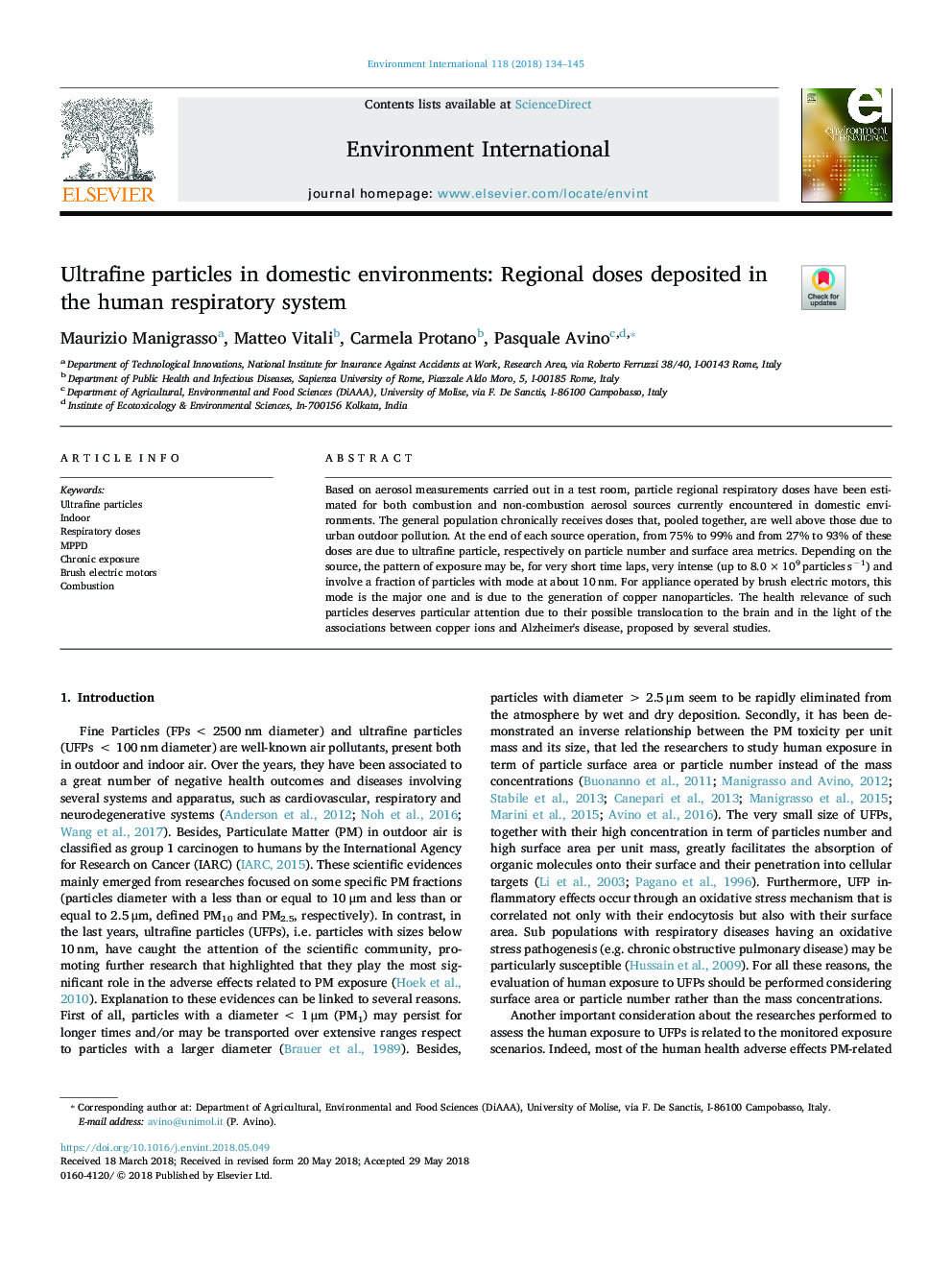| Article ID | Journal | Published Year | Pages | File Type |
|---|---|---|---|---|
| 8855071 | Environment International | 2018 | 12 Pages |
Abstract
Based on aerosol measurements carried out in a test room, particle regional respiratory doses have been estimated for both combustion and non-combustion aerosol sources currently encountered in domestic environments. The general population chronically receives doses that, pooled together, are well above those due to urban outdoor pollution. At the end of each source operation, from 75% to 99% and from 27% to 93% of these doses are due to ultrafine particle, respectively on particle number and surface area metrics. Depending on the source, the pattern of exposure may be, for very short time laps, very intense (up to 8.0â¯Ãâ¯109â¯particlesâ¯sâ1) and involve a fraction of particles with mode at about 10â¯nm. For appliance operated by brush electric motors, this mode is the major one and is due to the generation of copper nanoparticles. The health relevance of such particles deserves particular attention due to their possible translocation to the brain and in the light of the associations between copper ions and Alzheimer's disease, proposed by several studies.
Related Topics
Life Sciences
Environmental Science
Environmental Chemistry
Authors
Maurizio Manigrasso, Matteo Vitali, Carmela Protano, Pasquale Avino,
